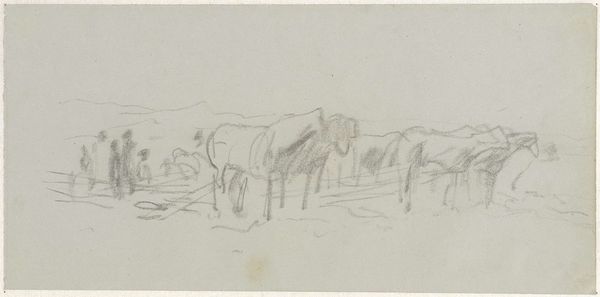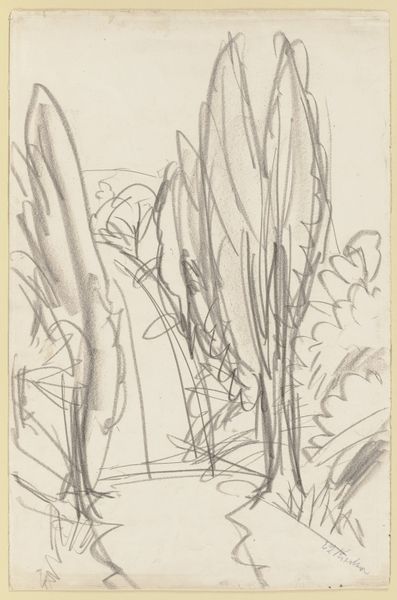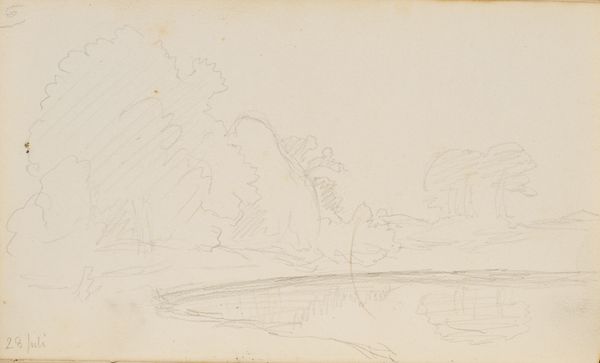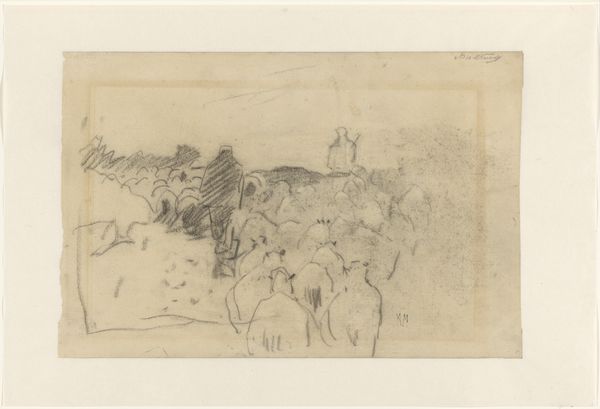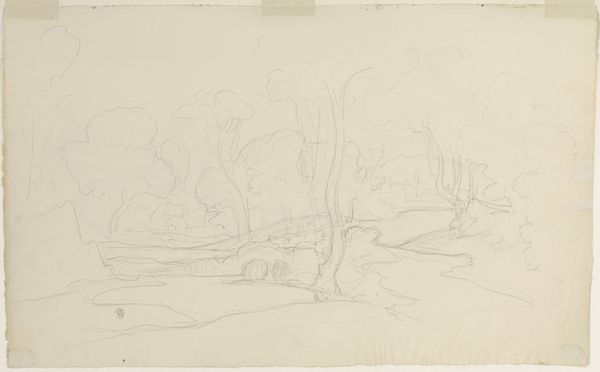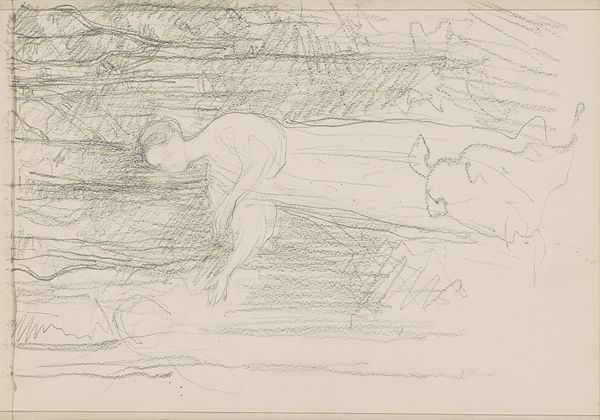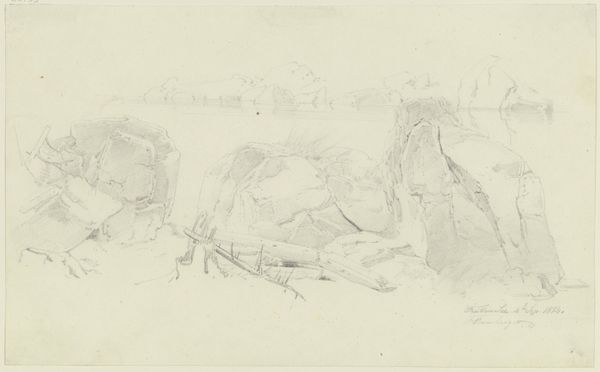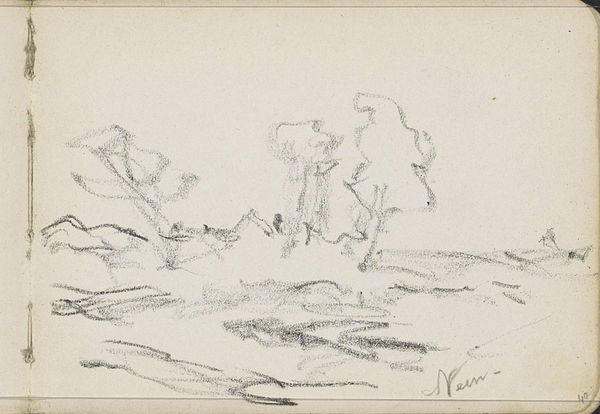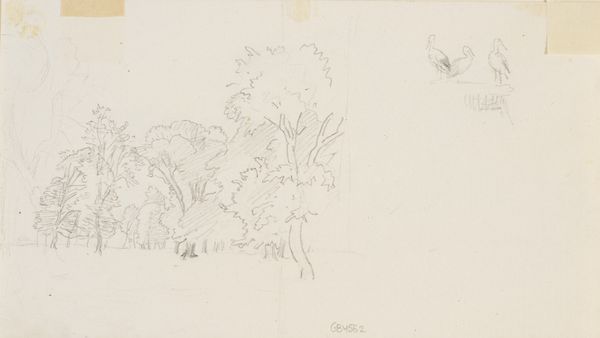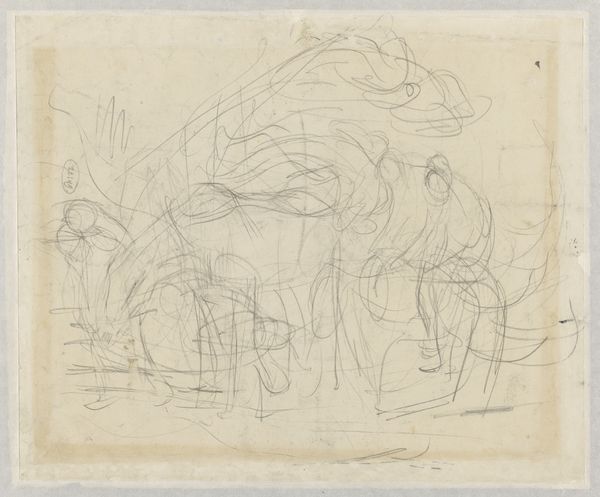
drawing, pencil
#
drawing
#
impressionism
#
pencil sketch
#
landscape
#
form
#
pencil
#
line
#
realism
Dimensions: 107 mm (height) x 137 mm (width) (bladmaal)
Editor: This is "Landskabsskitse med store tr\u00e6er," a landscape sketch of large trees by Theodor Philipsen, likely created sometime between 1840 and 1920. It’s a pencil drawing, very light and airy. What catches your eye about it? Curator: Well, first, let's consider the pencil itself. Philipsen's choice wasn't neutral. Pencils became readily available in the 19th century, changing how artists conceptualized drawing. It wasn’t about permanence, like ink might suggest, but about process and the ability to rapidly record observations. What does that tell you? Editor: It feels more immediate, more about capturing a fleeting moment. But how does that connect to materialism? Curator: Think about the labor involved, the extraction of graphite, the industrial production of the pencil itself. The rise of readily available materials shifted artistic focus. Landscape sketches became not just studies, but a democratic act of engaging with the land. Philipsen is using a tool born from industrialization to represent nature. Editor: So the very *thingness* of the pencil informs the art, not just what's depicted? Curator: Exactly. And consider the scale. This isn't a grand, commissioned piece for a wealthy patron. It's intimate, easily transported, suggestive of a personal connection to the landscape, perhaps intended as a commodity for a growing middle class with increased leisure time. Editor: That makes sense. I’d never really considered how the material itself could be so significant. Curator: Seeing the art objects as products with social implications offers a fresh lens. Consider how the accessibility of materials impacted the styles we see emerge, like Impressionism. Editor: That gives me a lot to think about when looking at art. Thanks!
Comments
No comments
Be the first to comment and join the conversation on the ultimate creative platform.
